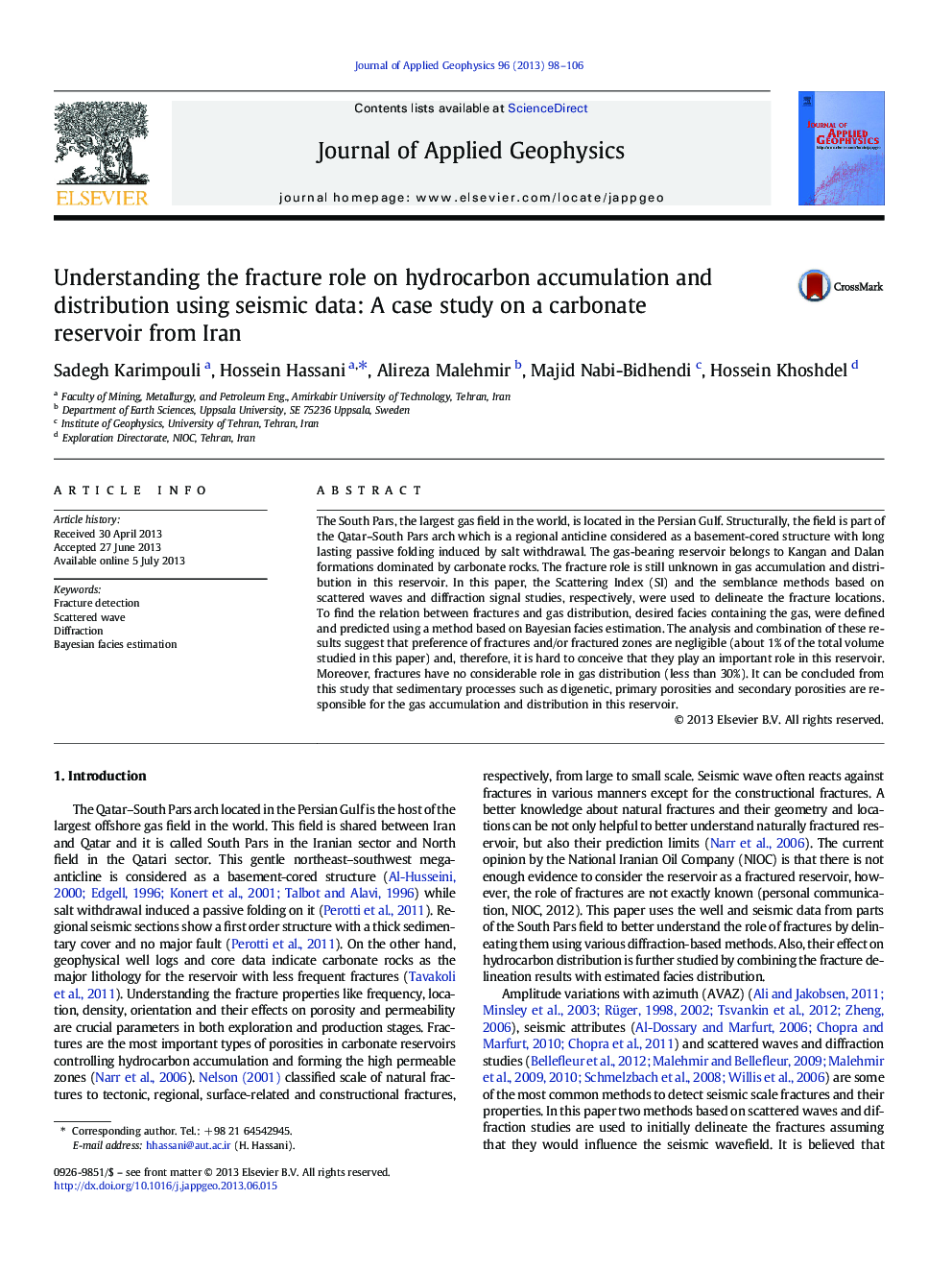| Article ID | Journal | Published Year | Pages | File Type |
|---|---|---|---|---|
| 6447339 | Journal of Applied Geophysics | 2013 | 9 Pages |
Abstract
The South Pars, the largest gas field in the world, is located in the Persian Gulf. Structurally, the field is part of the Qatar-South Pars arch which is a regional anticline considered as a basement-cored structure with long lasting passive folding induced by salt withdrawal. The gas-bearing reservoir belongs to Kangan and Dalan formations dominated by carbonate rocks. The fracture role is still unknown in gas accumulation and distribution in this reservoir. In this paper, the Scattering Index (SI) and the semblance methods based on scattered waves and diffraction signal studies, respectively, were used to delineate the fracture locations. To find the relation between fractures and gas distribution, desired facies containing the gas, were defined and predicted using a method based on Bayesian facies estimation. The analysis and combination of these results suggest that preference of fractures and/or fractured zones are negligible (about 1% of the total volume studied in this paper) and, therefore, it is hard to conceive that they play an important role in this reservoir. Moreover, fractures have no considerable role in gas distribution (less than 30%). It can be concluded from this study that sedimentary processes such as digenetic, primary porosities and secondary porosities are responsible for the gas accumulation and distribution in this reservoir.
Keywords
Related Topics
Physical Sciences and Engineering
Earth and Planetary Sciences
Geophysics
Authors
Sadegh Karimpouli, Hossein Hassani, Alireza Malehmir, Majid Nabi-Bidhendi, Hossein Khoshdel,
